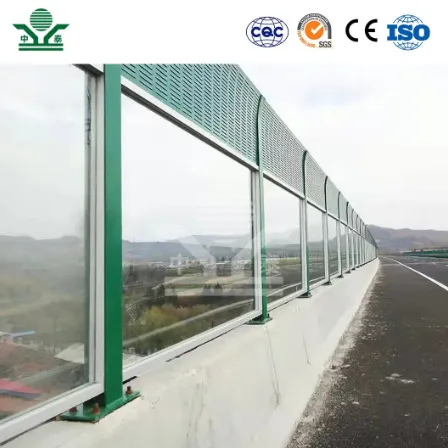Dust Control Fences An Essential Tool for Environmental Management
In the realm of construction and industrial activities, dust is an inevitable byproduct that can lead to significant health, environmental, and economic issues. As urban areas expand and industrial projects proliferate, the importance of effective dust control measures has never been greater. One of the most effective solutions in the arsenal of dust control strategies is the implementation of dust control fences. This article explores the significance, functionality, and benefits of dust control fences in managing airborne particulates.
What is a Dust Control Fence?
A dust control fence is a physical barrier designed to mitigate the dispersion of dust particles resulting from activities such as excavation, transportation, and processing of materials. Typically constructed from materials such as fabric, mesh, or even solid panels, these fences are strategically erected around construction sites, industrial facilities, or any location prone to dust generation. The primary goal of a dust control fence is to capture and contain dust particles before they can escape into the surrounding environment, thereby reducing air pollution and protecting public health.
How Do Dust Control Fences Work?
The functioning of a dust control fence is rooted in basic principles of air flow and particle capture. When wind passes through the fence, the material creates turbulence, which reduces the wind speed and allows dust particles to settle. The design and height of the fence are crucial; taller fences often prove more effective at controlling dust, as they disrupt wind patterns more significantly. Additionally, the porous nature of many dust control fabrics allows for air to pass through while trapping larger dust particles.
Dust control fences can be particularly effective when constructed in conjunction with other dust management strategies, such as water spraying, the use of chemicals that bind dust, or even vegetation barriers. By creating a multi-faceted approach to dust control, the overall effectiveness of a project can be significantly enhanced.
Why Use Dust Control Fences?
dust control fence

1. Health Protection One of the primary motivations for employing dust control fences is to safeguard the health of workers and nearby residents. Dust can contain harmful particles, including silica and asbestos, which pose serious health risks when inhaled. Even when composed of less harmful materials, dust can cause respiratory issues and aggravate existing health conditions.
2. Environmental Preservation Dust can have detrimental effects on the surrounding environment. It can contaminate soil and water sources, harm flora and fauna, and contribute to broader air quality issues. By utilizing dust control fences, companies and municipalities can significantly reduce environmental degradation.
3. Regulatory Compliance Many regions have established regulations aimed at controlling dust emissions, particularly in densely populated areas. Implementing dust control measures, such as fences, can help organizations adhere to these regulations, avoiding potential fines and legal complications.
4. Economic Benefits Dust not only affects health and the environment but can also impact operational efficiency. Excessive dust can lead to machinery wear and tear, increased maintenance costs, and project delays. By controlling dust levels, companies can maintain productivity and protect their investments in equipment and resources.
5. Community Relations Effective dust management can improve community relations and bolster corporate image. Being proactive about dust control demonstrates a commitment to safety and environmental responsibility, fostering goodwill among local residents and stakeholders.
Conclusion
Dust control fences represent a vital tool in the ongoing effort to manage air quality and protect both public health and the environment. As urban development and industrial activities continue to expand, the need for effective dust control measures will only grow. By investing in dust control fences and integrating them into broader dust management plans, companies and municipalities can not only comply with regulations but also contribute to healthier communities and a more sustainable environment. The significance of these barriers cannot be overstated, as they play a crucial role in shaping the future of responsible development and industrial practices.
-
Why Galvanized Trench Cover Steel Grating Resists Corrosion
NewsJul.10,2025
-
The Versatility and Strength of Stainless Expanded Metal Mesh
NewsJul.10,2025
-
Load Calculations in Steel Grating Platforms
NewsJul.10,2025
-
Keeping Pets and Kids Safe with Chicken Wire Deck Railing
NewsJul.10,2025
-
Hole Diameter and Pitch for Round Perforated Metal Sheets
NewsJul.10,2025
-
Aluminium Diamond Mesh in Modern Architecture
NewsJul.10,2025
Subscribe now!
Stay up to date with the latest on Fry Steeland industry news.

